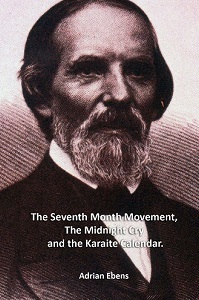Louis Berkhof and the Kenosis of Christ
Louis Berkhof (1873 - 1957) was a highly respected Calvinist Dutch Reformed theologian whose most well known publication is entitled 'Systematic Theology' , which he wrote in the 1930's. According to Wikipedia :
"Berkhof's writings continue to serve as systematic presentations of Reformed theology. They are organized for use in seminaries and religious education as well as individual reference, though his systematics works are demanding reads."
Berkhof makes the following observation of Philippians 2:6-8 in the following statement:
"It [the kenosis] of Christ is altogether subversive of the doctrine of the immutability of God, which is plainly taught in Scripture, Mal. 3:6, Jas. 1:17, and which is also implied in the very idea of God. Absoluteness and mutability are mutually exclusive; and a mutable God is certainly not the God of Scripture . . . . It means a virtual destruction of the Trinity, and therefore takes away our very God. The humanized Son, self-emptied of His divine attributes, could no longer be a divine subsistence in the trinitarian life . . . . The Christ of the Kenotics is neither God nor man. In the words of Dr. Warfield His human nature is "just shrunken diety." " (Systematic Theology, L. Berkhof, 1996, pp.328, 329.)
Philippians 2:5-8 is reproduced below:
"Let this mind be in you, which was also in Christ Jesus: Who, being in the form of God, thought it not robbery to be equal with God: But made himself of no reputation, and took upon him the form of a servant, and was made in the likeness of men: But made himself of no reputation, and took upon him the form of a servant, and was made in the likeness of men: And being found in fashion as a man, he humbled himself, and became obedient unto death, even the death of the cross."
Philippians 2:5-8 is known as the kenosis of Christ, for kenosis is derived from the Greek word kenoo, which means `to empty'. Thus, in Philippians 2:6-8, we find Christ emptying Himself of self, to the point that although (as some translations say), He did not think equality with God a thing to be grasped at, He humbled Himself and made himself of no reputation by willingly giving up His exalted place in heaven, by becoming a servant to all mankind. But there is more - for in `tasting death for every man' (Heb. 2:9) - which is the second death which is described in the Book of Revelation; Christ has died the `death of the cross' (Phil. 2 5:8), for in Biblical times, if you were accursed of God, you would be `hung on a tree' with criminals outside the camp (Deut. 21:22). The great Moses said it and the people believed it, for you could pray to God for forgiveness, but the heavens would be as brass and He would not hear you, for you had committed the unpardonable sin. This was the death which Jesus died for us when He was `hung on a tree' at Calvary; for at Calvary Christ experienced the `second death', so that we might not have to experience it ourselves! This is the stupendous import of the kenosis of Christ, for "God demonstrates His love toward us, in that while we were yet sinners, Christ died for us . . . when we were enemies" to Him (Rom. 5: 8,10).
As the humanity of Christ is everything to us; then Dr. Berkhof is implying that it is impossible for Christ to be manifested in the `likeness' of sinful flesh, as this constitutes a change from perfection to imperfection, and belies the influence which Plato has had on his theology. Clearly, Dr. Berkhof did not understand that Scripture teaches that Christ did not `empty' Himself of all divine attributes and thus become an Arian `lesser' God, for Christ retained the power to forgive sin and heal the sick with His Father's agape love. Thus Christ was still completely divine while He `emptied' Himself, of self - which was the entire point of Phil. 2:5-8 - if we are not emptied of `self', we cannot be filled with Christ!
Like many Calvinists, the Platonic conception that God is immutable formed the basis of his theology. It is derived from the belief that the Three Persons of the Godhead are consubstantial - which is to say They are of the same indivisible divine essence (ousia), or divine `stuff', as found in the declaration in the Athanasian Creed of the fifth century. This Creed is actually a combination of the Nicene Creed of the fourth century with the Chalcedonian Creed of the fifth century, for while the Nicene Creed stated the ontology of the Godhead - it did not define the `flesh' which the incarnate Christ was manifested in. This was left to the Chalcedonian Creed, with the Athanasian Creed (whom many believe was actually written by `St.' Augustine) stating both, as well as having the classic Trinitarian formula inserted into it, which states that God is a unity of Three Persons who are consubstantial, co-existent and coeternal.
The coeternal and coexistent aspects of this Creed are predicated upon the ideological foundation of the indivisibility of the Godhead. This is to say that as God is immutable, which is to say that God cannot change, then the divine `stuff' or essence (ousia) of God must always remain the same. Which necessitates that the eternal nature of divinity demands that the Three Persons of the Godhead must be coexistent, coeternal and all of the same divine ousia - which thus then determines the eternal existence of each member of the Godhead.
As this formula declares that God is indivisible, then by extenuation, God is also immutable and cannot be subject to change. Thus it is impossible for God to change from immaterial essence to material substance (such as manifesting a human body which is subject to sin); for reason that this would constitute a change from perfection to imperfection and God could no longer be God! It is based upon Malachi 3:6 - `I am the Lord, I change not.' While we apply that to His character, the Greeks applied that to the `divine stuff', or `essence' (ousia) of God as well - which is the divine `stuff' which constitutes the immaterial essence of the Godhead. Subsequently, according to Greek Logic, Christ cannot take upon Himself a material body, as this constitutes corruption of God Himself. Thus Origen Adamantius (d. 254 A.D) could declare in his answer to Celsus, a Greek philosopher who lived about a century before him, that:
"Nor was there any change in Him from best to worst, for how can goodness and benevolence be of the worst?" (Origen, `Against Celsus', ch. 15.)
This answer in fact left the Greek philosophers able to still contend that although Christ's character was exemplary - this did not explain the fact that He was manifested in a physical and therefore material body.
There is much more to the Arian controversy than we are generally led to believe. While it is true that Arius believed in a Christ who had been created by the Father and most likely saw Him as `strong God, but not full God' (according to the Thalia, which must be approached with caution, as what comes down to us of it is courtesy of Athanasius) - what the majority of Christians (and theologians as well) fail to comprehend, is that the reason he did this is because he proceeded from the ideology of the Greek Platonic platform that God is immutable.
Arius and Athanasius both proceeded from this same platform of immutability. As Arius had already been alarmed by the theology of Sabellius, in which the Godhead was depicted as God manifesting Himself in the modalities of Father, Son and Holy Spirit, Arius followed the lead of Lucian of Antioch (d. 312), by depicting the pre-incarnate Christ as a real Person in an effort to counter this theology; for the implications were that not only were the identities of the Father and Son subsumed by this all-encompassing God of Plato, but it implied that it is the Father, not Christ who died on the cross for us. Unfortunately, Arius' predilection for Plato left him with a problem, for Arius' focus on seeing Jesus as the pre-incarnate Son was combined with him also believing that the Eternal Father is immutable, and can have nothing to do with the material plane of existence, upon which we live. How did he try to solve this problem?
Greek logic teaches that the Eternal Father can have nothing at all to do with matter, for reason that as the divine essence of God is perfect, then any change from the perfection of the immaterial essence of God to material substance constitutes a change from perfection to imperfection and thus constitutes a change in God - Who is immutable and cannot change! For according to Greek logic, the God of the Greeks is little more than a wooden God who must be quarantined from experiencing the corruption of this material, and hence evil world . Therefore the early Gnostic Christians believed that it was impossible for God to descend to the material world to save fallen man from sin, and concocted all sorts of wild fantasies in an attempt to solve this. For instance, Valentinus, who died in about 160 A.D, believed that Christ's physical body was a mere illusion, as Christ could not be manifest in a material body. Yet Christians who heard their grandfathers testify of Christ knew that somehow He had breached the barrier that immutability imposes, so how did He do it?
The Greeks believed that the material universe was formed from the tears of Sophia (which later became known by the Hellenised Jew Philo of Alexandria with the Word, or Logos of God and later by Christians with Christ), who was the last of the divine emanations that proceeded from God and aspired to hidden knowledge (gnosis) that was inaccessible to her. Just as a stone that is dropped in a pond creates waves that reduce in amplitude the farther they move from the original event, so also did the Greeks believe that as each pair of Gods emanated from those that proceeded them, so also did they lose gnosis, or knowledge of their own inherent divinity and of the One pantheist-in-all God in which all things originate. Thus the material world was believed to have lost all gnosis of its inherent divinity, and was therefore believed to be evil. They believed in two Sophias, who were also equated with the two aspects of Aphrodite. The mundane, or common Aphrodite was the goddess of marriage and fertility and the temple prostitutes were dedicated to her. She also guided the souls of men back to union with the One at death. The "Heavenly Aphrodite" (or Sophia) aspired to a greater spirituality that was inaccessible to the "common" Aphrodite - a momentary ecstatic form of union with the One, which was, indeed, a "Heavenly Eros" that lifted man out of the morass of debauchery and sensuality that the "common" Aphrodite had fallen into, so that man might realize his True Self, which is the knowledge that he is a `little god' who desires union with the One at death. Aphrodite was also regarded as the world-Soul, or Gaia, the third aspect of the Platonic Trinity, from which all `lesser things' in the material world, such as the souls of men emanated from. Contemporary art portrays Aphrodite, Astarte and Ishtar as holding a dove in the palm of her hand, which represents the Holy Spirit as proceeding from her breast.
"Eros" was her son, and her attendant and therefore formed a mediating bridge between God and man, for Eros was believed to have originated from the Demiurge, which was a lesser God who effectively quarantined the One from the corruption of the material world. But as he himself was Demiurge and of lesser divinity than his mother, then he must first appeal to his mother, so that the petitions of men whose immortal souls were imprisoned on the material world might be heard - for the Eternal One was inaccessible to mortal men, for reason of their corruption by the material, and hence evil world.
The "Heavenly Aphrodite" of Greek mythology was, according to the pagan philosopher Plotinus of Lycopolis (d c. 270 A.D) the highest and most `unmingled' of the emanations - for she had nothing at all to do with matter. As her father was Ouranos (Uranus), the Eternal One and she had no mother, then therefore as the highest of the emanations, only Aphrodite was uniquely qualified among the gods to hear the petitions of her son, Eros. If this sounds familiar, then so it should - because currently in Catholicism, Mary is depicted as Sophia, and the Third Person of the Godhead, for it is the Holy Spirit, who according to the Nicene Creed (or doctrine of the Trinity) is the `Lord and giver of life' which Mariolatry depicts as proceeding from her breast in the form of a dove:
"The sheltering, embracing, cosmic image frequently given to Mary is actually better understood as God the Holy Spirit, the aspect of God in which we live more and move and have our being. The Third Person of the Trinity, the Holy Spirit, the Comforter, the Advocate is increasingly designated as feminine because the Hebrew word ruah is increasingly designated as feminine because the Hebrew word ruah, meaning "Spirit of God," is grammatically feminine; and the Greek word penuma, meaning "wind" or "breath," is grammatically neuter. Although the Latin word spiritus is grammatically masculine, it is not incorrect to refer the Holy Spirit as "She" . . . because the Holy Spirit is the aspect of God that is most mysterious - God among us, God between us, and God inside us - many Christians do not fully appreciate that dimension of the Trinity. Another means of involving Mary in the lives of the faithful, but one that does not confuse her with God, is to view her as an intercessor . . . The roots of Mary's particular role as intercessor possibly comes from third-century apocryphal writings concerning the death of Mary. Those stories, called Transitus Mariae, contain this prayer of Mary to Christ, "Give your aid to every one calling upon, or praying to, or naming the name of your handmaid." Jesus responded, saying, "Every soul that calls upon your name shall not be ashamed, but will find mercy and support and confidence both in the world that is now is and that which is to come in the presence of God in heaven." . . . These writings, like the Proevangelium of James, are not considered part of the scriptural canon, yet they pointedly and appealing tell of Mary's willingness to intercede." (`Mary, The Imagination of Her Heart', Penelope Duckworth, 2004, pp. 111, 112, 113.)
Please not that there is no basis for this belief in Scripture, as it is instead based upon extra-Biblical writings which are non-Canonical. In the `most secret places' of Catholicism, Christ becomes the demiurge, or lesser God who must petition His mother so that she might hear our prayers. Which really becomes a remarkable thing; for Christ is depicted in much the same way as Arius depicted Him, with the exception that unlike Arius, Christ's flesh becomes `sinless flesh', and Mary replaces Aphrodite by becoming the Mediatrix of Heaven! It has a distinct correlation with the Gnosticism of Valentinus, who believed that Christ's material body was an illusion, for Christ could not manifest Himself in a material body, and who also believed that Mary is the "spouse of Sophia [Christ], who was outside the Pleroma. And she is likewise styled Holy Spirit." (Irenaeus of Lyons, `Against Heresies, ch. XXXI', Anti-Nicene Fathers.)
It is for good reason that the body of the beast of Revelation 13:2 (in other words, the greater part of it) is likened as `unto a leopard' - for Catholicism was formed upon the platform of Greek Platonic philosophy comprising its ideological basis. The following quotation is from Proclus, who was a younger compatriot of `St.' Augustine, whose theology was largely influenced by him and his predecessor, Plotinus:
"For after he thought his works, the self-generated Paternal Intellect sowed the bond of Love, heavy with fire, into all things. And the reason they live for this is: "In order that the All might continue to love for an unlimited time and the things woven by the intellectual light of the Father might not collapse. And through this love, all things have been joined to one another: "With this love, the elements (or stars, stochiea) of the world remain on course. (Or. Chald. 39)
Therefore the elements - the cosmic ones, that is - have been bound and have friendship, you would discover this too is glorified by the theologians, for the Demiurge has brought forth Aphrodite in order that her beauty might shine forth and bring order, harmony and communion to all the things within the cosmos. And he also brought forth as her attendant Eros, who makes a one from the wholes." (Proclus: Commentary on Plato's Timaeus: Vol. 3, Book 3, Part 1', p. 106.)
There are two very good reasons why one can conclude that Arius was influenced by Plato's conception of a Demiurge - for while some existing fragments of his writings in fact portray Christ as Demiurge, his letter which was addressed to Eusebius, Bishop of Nicomedia (who should not be confused with the Church Historian Eusebius of Caesarea , and Trinitarian confidante of Emperor Constantine) cannot be understood unless it is done so in the context of `Demiurge' - for otherwise it is contradictory and does not make sense.
It should be also borne in mind that in the Greek, Sophia means wisdom, and the wisdom texts of Proverbs provided one means by which Platonic philosophy gained an entrance into Jewry, for after the Masoretic Text was translated into the Greek Septuagint, we begin to see the Hellenized Jew Philo of Alexandria equate the Logos, or word of God with Sophia, as the demiurge of Plato's Timaeus. Eventually Christians began to see what we would now regard as a rather perverse logic in extending this conception of Sophia as the demiurge to Christ, for although Proverbs 8:22 reads "the Lord possessed me in the beginning of His way" - Arius believed that this actually meant that "the Lord created me, in the beginning of His way" - and believed that this testified of the pre-incarnate Christ. Indeed, the R.S.V. gives an Arian translation to this text, for it reads:
"The LORD created me at the beginning of His work, the first of his acts of old."
Arius was one of many Gnostic Christians who believed that the wisdom texts of Proverbs also referred to Christ as Sophia, the `wisdom' of God, for in his referring to Christ as the wisdom of God, Christ replaces Sophia as demiurge, so that the Father might not experience corruption, and becomes a `lesser God' who cannot be equated as fully divine. Thus the `example theory' of the atonement is born, for we are then admonished to follow the path which Christ blazed for us, so that we might be saved by following His example. It is a subtle form of legalism which is still alive and well in so-called `Historic Adventism' today.
It was in this manner that Christ became depicted in Arianism as having a depleted divinity - and we must follow His example, so that we might be saved. It is also for this reason that Philippians 2: 6-8 became seen as depicting an Arian Christ, as we have seen by Dr. Berkhof's statement, when in fact if one bears in mind that Christ still retained the divine attribute of subjecting Himself to temptation, while at the same time retaining the power to forgive sin, then the entire gospel hinges upon this passage! For Christ died the "death of the Cross" (v.8) - the second death! This is the `everlasting gospel' of Revelation 14:6.
Athanasius also departed from the very same platform of immutability which formed the basis of Arius' ideology, but was astute enough to see that in order for Christ to provide an atonement for sin, He must also be divine. But as divinity is the province of eternity, he perceived that Christ must also be a self-existent God Who has existed co-eternally with the Father. However, although the incarnate Christ would somehow bridge the abyss between Divinity and humanity, it was impossible for Christ to bridge the gap between God and man by becoming Demiurge - for then Christ would no longer be able to forgive sin, for virtue of being a subordinate 'God' with a depleted divinity. This lead to Athanasius declaring that:
"I did indeed think that enough had been said already against the hollow professors of Arius's madness, whether for their refutation or in the truth's behalf, to insure a cessation and repentance of their evil thoughts and words about the Saviour. They, however, for whatever reason, still do not succumb; but, as swine and dogs wallow in their own vomit and their own mire, rather invent new expedients for their irreligion. Thus they misunderstand the passage in the Proverbs, 'The Lord has created me a beginning of His ways for His works ,' and the words of the Apostle, 'Who was faithful to Him that made Him and straightway argue, that the Son of God is a work and a creature." (Athanasius, 'Four Discourses Against the Arians', Discourse II, 1.)
Athanasius further stated that:
"It is simply not right to name the Son of God a creation. We have also learnt to read the passage in Proverbs correctly. It is written: "The Lord created me at the beginning of his works . . . " Here one has to search for the hidden significance, to reveal the correct meaning. . . .If this passage were to refer to an Angel or any other created being, it would be appropriate to use the expression "He created me" as for one of God's creations. However, it is God's Sophia, in whom all created things have been made, who is speaking of herself here. In this case one has to think differently; here the words "he created" mean nothing more than "he begot"." (From `The Most Holy Trinosophia and the New Revelation of the Divine Feminine', R. Powell, p. 34.)
Athanasius' Platonic influences becomes apparent in this statement, when we see that he refers to Christ as the "Sophia" of God, and his statement that in Proverbs we must look for `the hidden significance, to reveal the correct meaning'. Allegory had always been a hallmark of the Catechetical School of Alexandria, and Athanasius succeeded Bishop Alexander as its Dean. Like many of the Patristic Fathers, his Platonism was also apparent in his belief of the doctrine of divination, in which he stated in `On the Incarnation [of Christ], that:
`He [Christ] was made man, so man could be made God';
(`On the Incarnation', 1:54.)
and in his `Four Discourses Against the Arians' that:
` . . . He did not receive in reward the name of the Son and God, but rather He Himself has made us sons of the Father, and deified men by becoming Himself man. Therefore He was not man, and then became God, but He was God, and then became man, and that to deify us.' (`Against the Arians', 1:38, 39.)
Like many of the Patristic Fathers who followed in the traditions of the Alexandrian School, Athanasius believed that at death, we achieve divination, and become `little gods'. As he also perceived Christ as self-existent and therefore eternal, then this in itself effectively quarantined the Father from corruption. However, this then created another problem, for Christ's humanity threatened to corrupt His divinity, which therefore necessitated that the incarnate Christ o needed to be quarantined from sin. How did Athanasius solve this vexing problem?
His answer to the dilemma that the Platonic ideology on the immutability of God created, was that Christ must manifest Himself in the pre-lapsarian human `nature' of Adam, and thus satisfy Mal. 3:6 - "I am the Lord I change not", by utilizing Greek philosophy to satisfy this demand which the Platonic ideological conception of immutability imposed upon him. For this reason, although most Trinitarians are blissfully unaware of the fact that the dogma they believe has been heavily influenced by Plato, nevertheless, Trinitarian pastors tend to avoid Phil. 2:6-8 completely, for as Louis Berkof declared, "it destroys our Trinitarian God". Which is why the vast majority of Christian Churches teach that when Christ was manifest in human `flesh', it was the `sinless' flesh of Adam before the fall - which necessitates that Christ cannot be tempted `in all points as we are, yet without sin' (Heb. 2:18), for their Platonic platform of immutability necessitates that they believe that if Christ manifested Himself `in the likeness of sinful flesh' (Rom. 8:3), then this would constitute corruption, and sin itself.
However, as Phil. 2:5-8 is an integral part of Scripture that testifies to the Agape of Christ - and all interpretation of Scripture either stands or falls on how we relate to the Eternal Father giving His Divine Son to us for eternity (John 3:16), then the fact that Trinitarian theology declares that this passage is heresy also declares (by association) that the Agape of God, as believed by the disciples of Christ is also heresy - and thus Trinitarianism is condemned as heresy by its own theology; for it declares (as Origen did), that "God is Eros". So we see that just as when the `word turned the world upside down' in the first century (Acts 17:6), the Agape of God made disciples of you, or enemies of you - for there was no sitting on the fence! So it is today, for Dr. Berkhof's statement demonstrates that the Agape of Christ cannot be found in Trinitarian doctrine. But nor can it be found in Arian doctrine, for while Arius and Athanasius departed from the same platform of immutability and ended with wildly divergent depictions of Christology - both retained the Platonic idea that as the Eternal Father is immutable and cannot change, then Divinity must be somehow quarantined from sin. Arius achieved this by making Christ into the demiurge - a `lesser' God who quarantined the Eternal Father from sin, while Athanasius quarantined Christ from corruption, by depicting Christ as manifest in a body which could only be tempted by `innocent infirmities' such as hunger and thirst; which in theological terms is known as the pre-lapsarian `nature' of Adam.





